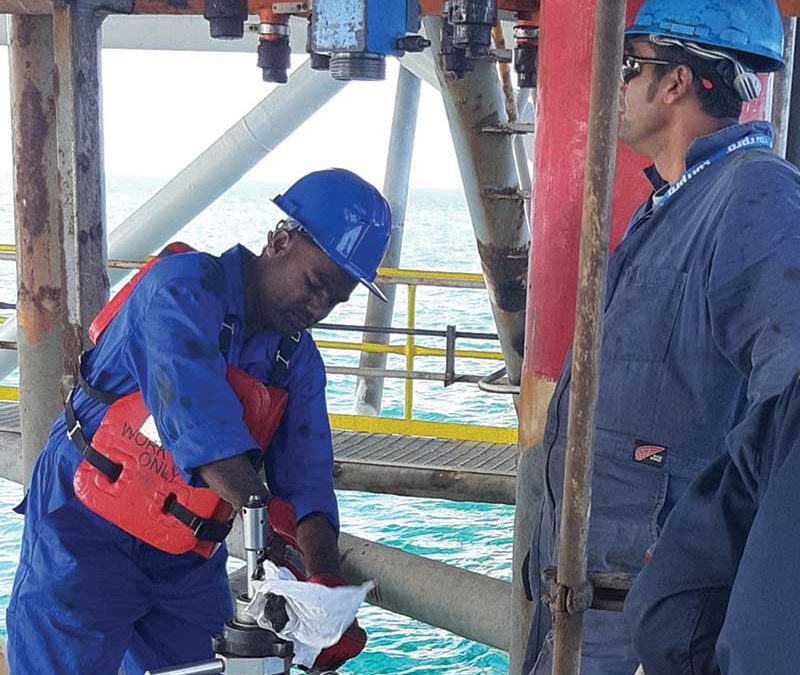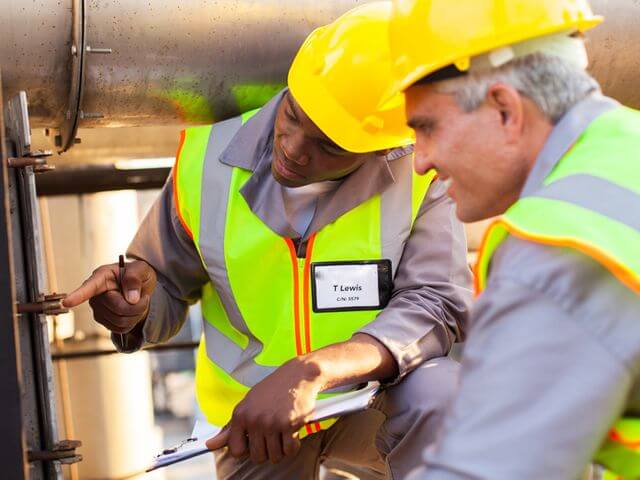Working Day and Symposium: Managing Corrosion in Low-Carbon Energy Technologies
On April 28th, 2021, you’re invited to the latest in a series of working days hosted by the Institute of Corrosion’s Corrosion Engineering Division.
Because of coronavirus restrictions, you can participate from anywhere in the world. All you need to do is register and join us on Zoom. This symposium is also a designated meeting of the European Federation of Corrosion, so it is one that corrosion engineers and specialists won’t want to miss.
Why corrosion engineering and low carbon technology?
Over recent years, low carbon technologies have become a strategic priority. The whole of society, from governments to the man on the street, has become focused on green issues. Technology is playing its part, across most industries, as we seek to develop greater sustainability through green, carbon-neutral technologies and innovations.
However, many of the technologies and equipment are deployed in severe corrosive environments – such as off-shore and near-shore wind turbines and pipelines – as well as providing new corrosion challenges (as in the case of biofuels).
This working day and symposium will give all delegates the opportunity to learn and exchange information across many aspects of managing corrosion in low-carbon energy technologies.
A Great Opportunity to Network
Although this working day is being held online, once more it gives you the opportunity to do some serious networking with corrosion specialists from many different industry sectors. Of course, you will also learn about some of the latest developments in managing corrosion in low-carbon energy technologies, including:
- Wind power
- Biofuels
- Nuclear power
- Hydrogen power
- Carbon capture and storage (CCS)
After the talks, we will break into the individual CED working groups, or join a general discussion group on corrosion in low carbon energy technologies. The agendas for these will be published here when possible.
The CED Working Day programme
We’ll convene online at 9:15 am. Our Chair, Nick Smart, will present a welcome address at 9:30am, and the technical talks will begin at 9:45am.
During the day, there will be five talks, each lasting 30 minutes, including discussion. Lunch break between 12:40am and 1:30pm will be preceded by presentation of the 2021 Paul McIntyre Award and a short talk by the recipient.
There will be one final talk after lunch, before we break for the CED Working Group meetings.
A closing discussion rounds the day off at 4:45pm.
(All times are BST)
About the talks
As ever, we have gathered some of the leading names in their respective fields to present to you. The five talks, in order of presentation, are:
· Pipeline Materials in a Hydrogen Environment, presented by Nancy Thompson (SGN) and Dr Julia Race (University of Strathclyde)
Nancy Thomson is experienced in high pressure oil and gas pipelines, onshore and offshore around the world. With an MSc, Nancy’s most recent work includes innovation projects on the Local Transmission Network (LTS) and investigating the repurposing of the LTS for hydrogen and CO2.
Dr Julia Race has a wide range of research expertise in metallurgy, failure analysis, welding and corrosion in the power, petrochemicals, and energy sectors. She worked in industry for more than 20 years, and for seven years as an integrity consultant for GE Oil and Gas. Now in an academic career, she joined Strathclyde University in 2014, where she continues to research CCS and hydrogen transport.
· Cathodic Protection of Offshore Wind Design Using Upcoming ISO 24656, presented by Birit Buhr Jensen (Ørsted)
Birit Buhr Jensen is a senior lead specialist at Ørsted, specialising in cathodic protection and corrosion protection of steel structures, and corrosion evaluation and monitoring, assessment, repair, and sustainability of reinforced concrete structures.
· Corrosion Challenges for Reliable Biorefineries, presented by Francois Ropital (IFPEN)
Francois Ropital is qualified as a Materials Engineer, Doctor of Chemical Engineering, and HDR (Habilitation à Diriger des Recherches) in Applied Chemistry and Industrial Process Engineering. He has been Editor-in-Chief of the journal ‘Oil and Gas Science and Technology – Revue d’IFP Energies Nouvelles’, is co-director of the ‘Study of reaction mechanisms on an adapted scale’ of IFPEN fundamental research, and is the associate university Professor (PAST) at INSA-Lyon, MATEIS Laboratory and Department of Materials Science and Engineering. He is also Chairman of the Working Party “Corrosion in refinery and petrochemistry” of the European Federation of Corrosion. Francois has authored two books, several book chapters, more than 50 peer-reviewed publications, and 20 patents.
· Advanced Testing methods for PWR Environments that Could Support Other Zero Carbon Technologies, presented by Stuart Medway (Jacobs)
Dr. Stuart Medway works for Jacobs, where he is the technical lead for high temperature corrosion within the Material Science and Structural Integrity (MSSI) business. Stuart has been performing and developing laboratory research programmes to understand material performance in representative environments for over 14 years. Many of these have been focussed on stress corrosion cracking (SCC) of materials in the primary cooling circuit of pressurised water reactors, where he is a recognised expert in this field. Stuart has been part of the EPRI expert panel for SCC of nickel-based alloys for a number of years and is the current technical chair for the Environmental Degradation of Materials in Nuclear Power Systems conference.
· Methodology for Corrosion and Environmental Assisted Cracking Risk Assessment for Industrial Carbon Capture, Utilisation and Storage (CCUS), presented by Ivan Gutierrez (Pace Flow Assurance), Brad Healey (Oil and Gas Corrosion Ltd), and Matt Healey (Pace Flow Assurance)
Ivan Gutierrez is a national expert member of several national and international corrosion committees and task forces, and helps oil and gas operating companies to manage the risk of corrosion, delivering technical support throughout the life cycle of assets, from concept and Front End Engineering Design (FEED), through Engineering, Procurement, Installation and Commissioning (EPIC) operations, integrity management and evaluating options for asset life extension.
Brad Healey is a process engineer at Oil and Gas Corrosion Ltd. He works on global projects, manages a team of engineers, and has presented at the NACE conference. He has completed an industry-backed dissertation project regarding offshore H2S disposal methods and is now an industrial supervisor for an MEng project investigating the long-term environmental impact of scrubber discharges related to offshore H2S management.
Matt Healey is director at Pace Flow Assurance, with around 20 years of experience in CCUS, oil & gas, and large infrastructure projects.
How do you register for the working day?
You can register for this exciting Working Day and Symposium by downloading the event information and registration form and following the registration instructions. We look forward to seeing you there, from the comfort of your own home or workspace.
For details about membership of the Institute of Corrosion, visit our membership page.





